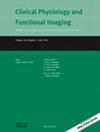Effect of 7-day dietary supplementation with grape seed extract on cardiac autonomic and hemodynamic responses in elevated and stage 1 hypertension
Abstract
Backgrounds
Evidence indicated that an increase in nitric oxide (NO) bioavailability via dietary supplementation decreased sympathetic output. Grape seed extract (GSE) supplement has been known to increase NO production and improve endothelial function in individuals with elevated and stage 1 hypertension (ES1H), but no studies have assessed the effects of this extract on autonomic balance. Accordingly, the aim of the study was to investigate the effect of 7 days of dietary GSE supplementation on cardiac autonomic and hemodynamic responses.
Methods
Ten males were recruited in this study. Each subject received GSE or placebo supplementation with a 1-week wash-out period. In a double-blinded, cross-over design, hemodynamic responses (heart rate (HR), stroke volume (SV), cardiac output (CO), systolic blood pressure (SBP), diastolic blood pressure (DBP), mean atrial pressure (MAP)), heart rate variability (HRV), and cold pressor test (CPT) were compared before and after either GSE or placebo supplementation.
Results
Our results indicated that GSE decreased resting DBP (75 ± 2 vs. 71 ± 3) and MAP (91 ± 2 vs. 88 ± 3) compared to the placebo (DBP:71 ± 3 vs. 74 ± 3; MAP: 89 ± 2 vs. 90 ± 2). However, MAP responses to CPT had no difference between post-PL and post-GSE supplementation when expressed as absolute increases (PL, Δ10.3 ± 1 mmHg, GSE, Δ9.1 ± 1 mmHg). There were no differences on the HR, SV, CO, SBP, and HRV between placebo and GSE treatments.
Conclusions
Our study suggests that GSE can be used as a dietary nutraceutical capable of reducing blood pressure and the risk of ES1H development. The reduction of blood pressure occurs via peripheral vasodilation, not associated with cardiac autonomic reactivity.


 求助内容:
求助内容: 应助结果提醒方式:
应助结果提醒方式:


